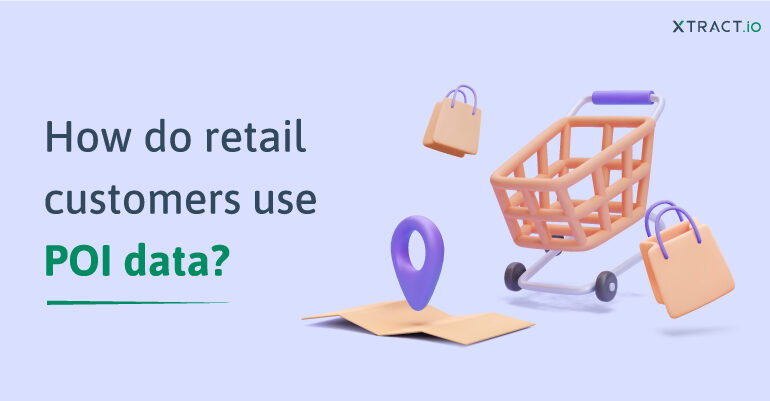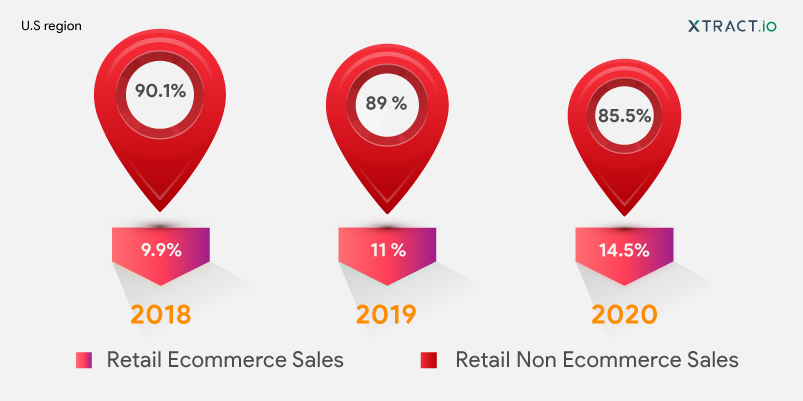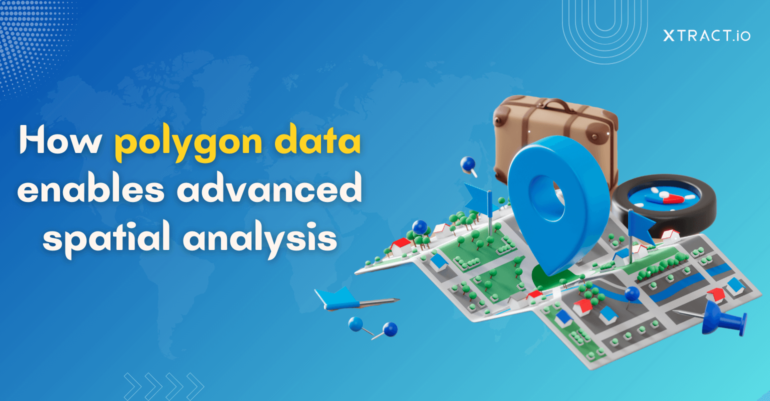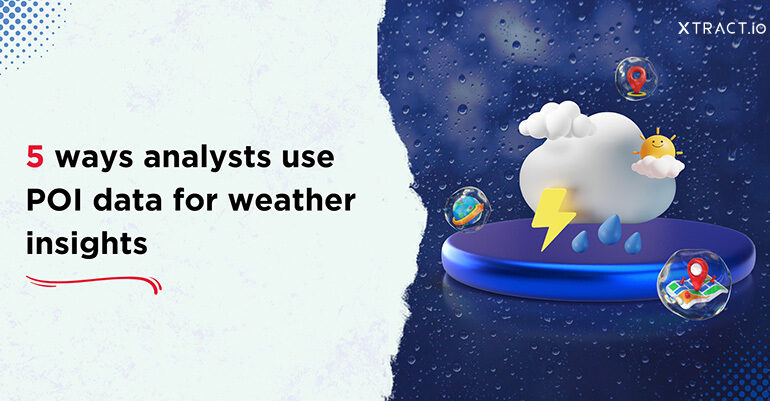With the advent of technology, the retail and ecommerce industry has observed significant growth over the last decade. The retail sector is a leading factor for the country’s increasing GDP. The tech growth ain’t limited to ecommerce, as brick-and-mortar stores have also found ways to provide a reach consumer experience and attain a high level of customer retention.
Retailers have now turned into data and analytics and leveraging its benefits across different sectors of the retail industry. With the increase in data generation, the demand to analyze and visualize these data in the form of dashboards is also increasing. Fortunately, in the retail industry, most of the transactions still happen offline (as seen below), in comparison to online transactions as seen in the graph below for the U.S region.
As per reports, the number of transactions in grocery stores in China declined by 30 percent during the pandemic, while in the United States, nearly 17 percent of consumers are shifting from offline to online stores. Post-pandemic, the retail industry is relying on retail datasets to understand the changing dynamics of the market and attain its lost foot traffic via geo-marketing and mobility analysis.
POI data, also known as location data, indicate the exact location of a building, store, or shop that helps retailers to understand the market and consumer behavior around the market. POI data for the retail industry could cover locations across various sectors as seen below.
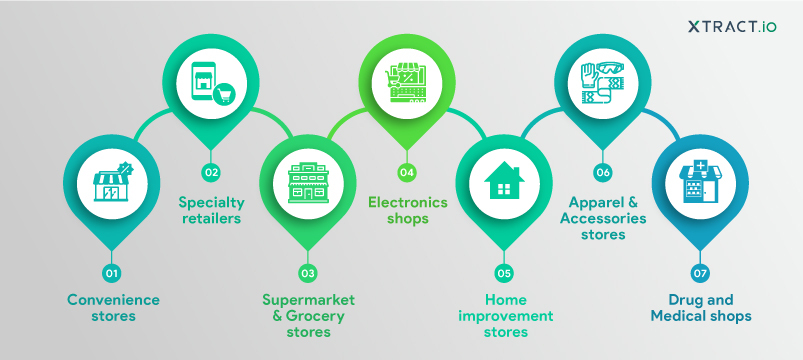
POI data help these sectors in devising a business strategy based on real-time locations, customer behavior, and market trends. It answers important questions to take geographic-driven decisions. Examples include,
- Do the customers in my area require the products I offer?
- Is my new store in the main market locality?
- How far is my shop from where consumers live?
- What is the distance of my inventory to the manufacturing hub?
- What is the return customer percentage for x store and why?
- Is my competitor store already positioned in the market?
- What are the POIs related to my industry in the same area?
Here are 4 ways POI retail datasets aid the retail industry in its growth.
Boost customer experience
With an accurate navigation system, retailers can deliver orders to their customers at the right time without any hassle. Build reliable maps with accurate POI data that help you in an efficient delivery assignment process, provide shorter delivery time, track customer orders, and many more. The faster the delivery time, the happier the customer which in turn prompts them to purchase again.
According to a survey held in 2020 (post-pandemic), 17.7% of people in the U.S still preferred going to the nearest chemist store to buy medicines, instead of purchasing them online. This means that brick-and-mortar stores still have the opportunity to attract customers and retain them for their business growth. Therefore, leverage location data to understand customer expectations and boost their experience.
Enhance store performance
While foot traffic to the store is important, it is equally important to understand and analyze the traffic patterns in the store. If you are owning a home improvement store, indoor polygon data will help you to answer key pressing questions –
- When is the store usually crowded? (to set the store opening and closing hours)
- Which part of my store is always populated? (to optimize store layouts for maximum footfall)
- How many people look for staff support in a particular area/floor, for example, the cosmetics section? (to fulfill customer satisfaction by revising the staffing allotment)
- What is the customer shopping pattern? Do they first visit the product section with discounts? (to enhance the merchandising strategy)
Insights from these questions help stores to enhance their performance – maybe keep the slow-moving product in the most trafficked location or keep the discounted products at the entrance of the location. Indoor polygon data from POI data provider Xtract.io are accurate and handcrafted for the highest precision and it helps you to answer all of the retailer questions
Analyze retail site location
Opening a new store can be as taxing as running a new business. POI data help new retailers to analyze the new site and enhance the site selection process.
- Trade area analysis – Through retail datasets, discover the areas that the consumers usually travel to and how far is that location from your store. Identify sites that meet your target customer base and areas that have gaps in the local market.
- Competitor landscape – Understand where your competitors are located, what is the average footfall in these stores, which competitor is attracting customers, and how. A lot of these questions are easily answered by the location data of retail stores and shops.
Along with analyzing consumer foot traffic, local marketing plans and merchandise space planning are critical components of new store openings. These components must be executed with strategic planning to take geographic-driven decisions. With the right POI datasets, be at the right place to target the right target audience.
Improve your supply chain
Location intelligence plays a key role in supply chain optimization. From finding an optimal location for the distribution center to serving the goods to the customer at the right place, location data is the backbone of retail analysis.
To meet the continual demands of the customers, retailers are leveraging location data analytics to optimize stores, distribution centers, and logistics partners. Through these analyses, warehouses are located and mapped closer to the target market to provide faster deliveries and reduce delivery costs. Location data helps in saving the supply chain and delivery cost by accurately planning transportation routes.
At Xtract.io, 95% accurate POI data are manually handcrafted and stored in LocationsXYZ, a vast POI database that consists of location data across 11 industries. Make your next business decision geography-driven through our POI data.


